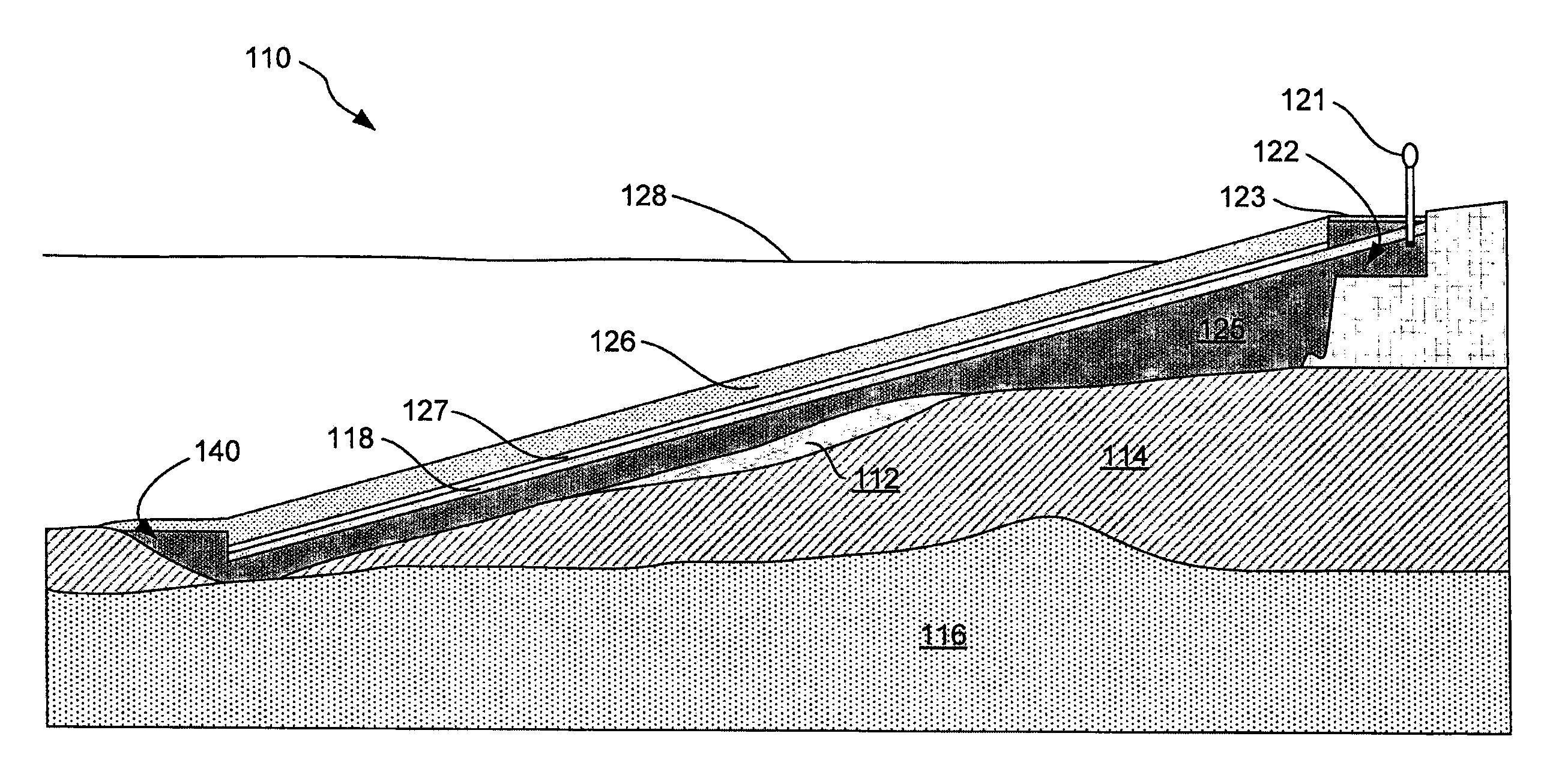Devices and methods for directing migration of non-aqueous phase liquids from sediment
- Summary
- Abstract
- Description
- Claims
- Application Information
AI Technical Summary
Benefits of technology
Problems solved by technology
Method used
Image
Examples
example 1
Utility of a Sand Layer for Directing NAPL Migration from NAPL-Contaminated Sediment During Ebullition
[0035]NAPL migration from sediments to the surface of water bodies has been reported frequently at sites with NAPL-contaminated sediments, such as sediments contaminated with coal tar and creosote. Transport of NAPLs from NAPL-contaminated sediment is facilitated by gas ebullition caused by anaerobic biodegradation of organic matter in the sediment. A remedy often specified for these sites is a sand cap or a sand cap amended with sorbent materials (e.g., coke breeze or organoclays), or a reactive core mat (RCM) consisting of a geomembrane sandwiched around a reactive layer containing sorbent material such as organoclay. However, through testing, I recognized that such an art-recognized sand cap or RCM for controlling NAPL migration was not effective.
[0036]I used a laboratory study to assess the effectiveness of a sand layer for directing NAPL migration from a NAPL-contaminated sedim...
example 2
(Prophetic): Utility of a Sloped Layer for Directing NAPL Migration from NAPL-Contaminated Sediment During Ebulliton
[0038]This example describes the utility of a sloped layer in treatment of a sediment having a tar deposit. By way of example, the inventor determined dimensions of a tar deposit based on results of a field sampling program at a large river having a daily average flow of 400 m3 / s, and a peak flow in excess of 4,000 m3 / s. The estimated velocity at the riverbed varied between 0 m / s at slack tide to nearly 3 m / s during extremely high flow. A bulkhead at the upstream edge of the cove created a large eddy where the river velocity was much less than in the main channel of the river. The sediment textures in the riverbed were characteristic of a high-energy environment—well- to poorly graded gravel with cobbles in the main channel of the river, and silty sand to well-graded gravel in the lee of the bulkhead.
[0039]Organic material in sediment in the lee of the bulkhead include...
PUM
 Login to View More
Login to View More Abstract
Description
Claims
Application Information
 Login to View More
Login to View More - R&D
- Intellectual Property
- Life Sciences
- Materials
- Tech Scout
- Unparalleled Data Quality
- Higher Quality Content
- 60% Fewer Hallucinations
Browse by: Latest US Patents, China's latest patents, Technical Efficacy Thesaurus, Application Domain, Technology Topic, Popular Technical Reports.
© 2025 PatSnap. All rights reserved.Legal|Privacy policy|Modern Slavery Act Transparency Statement|Sitemap|About US| Contact US: help@patsnap.com



